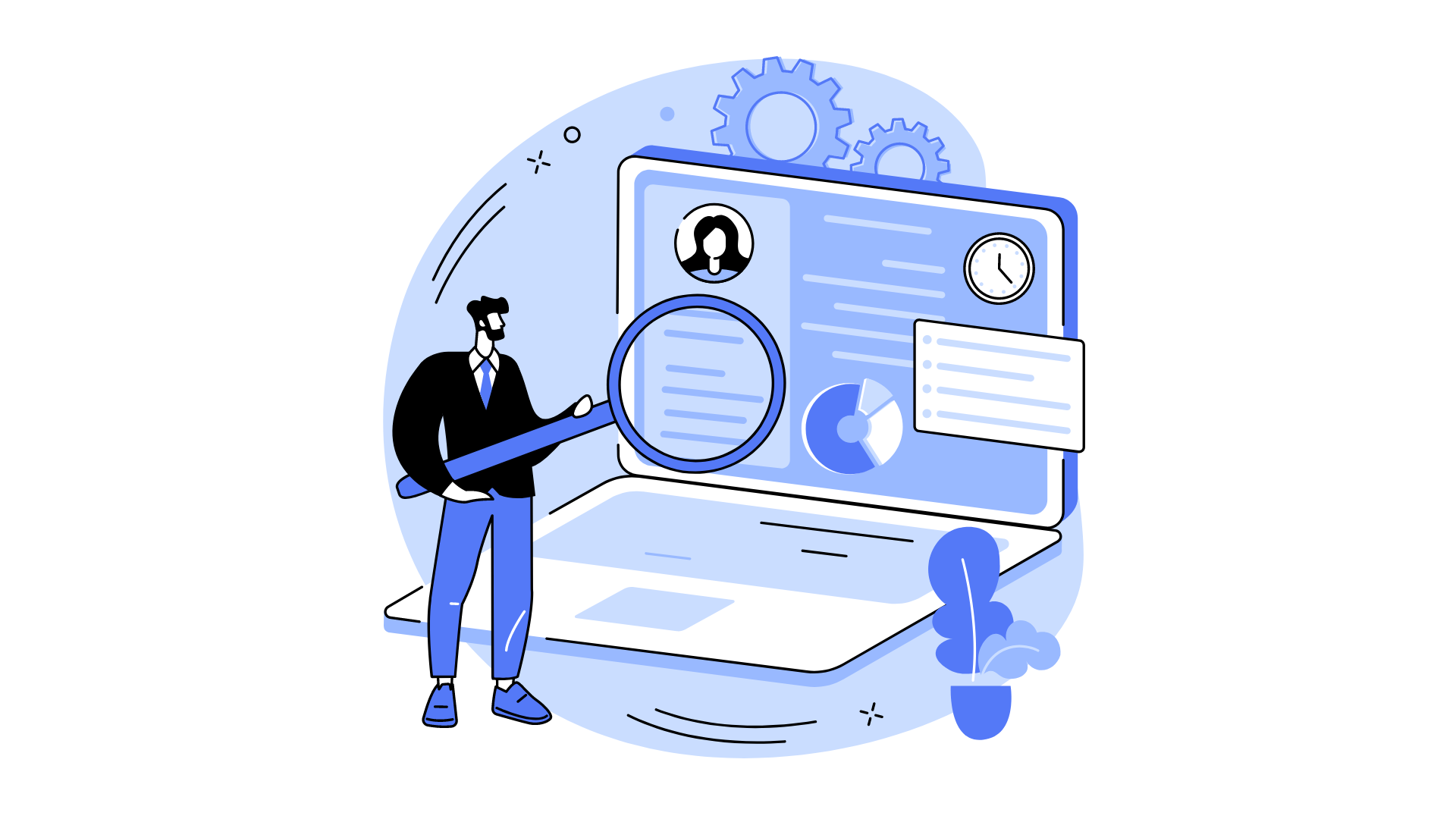Posté le
4 reading time

HRIS (Human Resources Information Systems) are increasingly successful in a world where digitalization continues to evolve. These technological tools designed to centralize, organize, and optimize human resources management remain to this day indispensable solutions for companies wishing to double their efficiency. What are the advantages of an HRIS? Based on which criteria to select yours? How to implement it effectively and integratedly? That’s what we propose to see together.
What’s an HRIS?
An HRIS is a technological tool designed to centralize, organize, and process all personnel data within a company. This type of platform offers a range of features to simplify human resources management on a daily basis as well as strategically.
At the heart of the digital revolution in companies, the Human Resources Information System (HRIS) stands as an essential engine for productivity and optimization. Thanks to its ability to centralize and efficiently process HR data, it provides you with a powerful lever to improve performance and maximize the operational efficiency of your company.
An HRIS is composed of modules. Each module handles a specific task related to human resources, such as payroll management, leave management, recruitment, employee engagement, talent retention… The specificity is that the company can choose to install only the modules that are necessary for it. This allows for customization tailored to the specific needs of each company.

What are the advantages of an HRIS?
With these features, an HRIS provides real support to HR departments and teams, becoming a valuable ally. Thus, a Human Resources Information System offers 3 key advantages:
1. Productivity and time savings
The main advantage lies in data centralization, task automation, and workflow implementation. As a result, HR teams see their administrative workload lightened, allowing them to focus on higher-value activities. For example, they can focus on managing employees’ skills, enhancing the company’s human capital, or improving well-being at work.
2. Data visibility
An HRIS also allows for a clear and real-time overview of a wide range of information regarding employees’ performance. The Human Resources Information System is emerging as a true management tool, enabling decision-makers to make informed strategic decisions. Thus, these software solutions offer the ability to generate comprehensive HR reports and dashboards containing valuable data to detect potential issues and take appropriate actions.
3. Improvement of employee monitoring
HR processes go far beyond simple administrative tasks: they also encompass human capital management, a key element of overall company performance.
Faced with this imperative, HRIS software provides enhanced support to employees. They support managers in various facets of their work, including:
- Tracking the progress of employees and their goals;
- Assessing their skills;
- Managing training requests;
- Improving internal communication
As a result, management is streamlined and decision-making is informed, relying on concrete and reliable data. This allows companies to maximize the utilization of their human capital and achieve optimal performance.
How to implement an HRIS?
To implement a Human Resources Information System within your company, 6 key steps need to be considered:
1. Audit of HR practices and processes
Initially, it is important to conduct an HR audit of your current practices by listing the various processes and tools in place. You must also define the objectives of implementing the HRIS (for example, reducing turnover).
Audit your human resources practices by identifying what demands the most time. Also ask yourself which currently used solutions work and which ones are optimizable or obsolete.
2. Definition of the budget
Once the audit is completed, it will allow you to measure the scope of your project and, thus, identify the most suitable HRIS solution. Define the priority HR activities to be implemented.
At this stage, it is important to appoint a project manager. This person will be responsible for ensuring the successful implementation of the HRIS. Their roles will include collecting and prioritizing needs, selecting the HRIS provider, as well as supporting change management among the teams. They will also monitor the schedule and budget.
The project coordinator will then assemble a team, often consisting of the HR director, a member of the senior management, as well as one or more employees responsible for representing the needs of various departments.
3. Budget definition
The project manager also has the mission of evaluating the ROI required for the implementation of the HRIS project. For this, it will have to assist in determining an initial budget, intended for the implementation of the solution, as well as an annual budget for the rental and/or maintenance of the software.
4. Establishing a forecasted schedule
Another important step is creating a detailed schedule for the implementation of the project. Meetings with the team designed by the project manager should also be scheduled in the plan to review the project’s progress.
5. Choice of provider
A preselection of HRIS software vendors must then be made. For this, consider creating an Excel spreadsheet with the selection of various HRIS software options, including all their characteristics, in order to make your choice.
For an optimal decision tailored to your specific requirements, consider criteria such as the features offered, the interface’s usability, integration with your existing systems, the customer support provided, data security, the various operating costs, as well as feedback gathered from HR communities or peers.
6. Preparing for change
To ensure the success of the project, the employees’ buy-in to the HRIS solution implemented within your company is essential!
To best support this change, ensure the implementation of training and support so that members of your company do not encounter difficulties when using the HRIS software.
Smart HR management with Balencio
As you have understood, the need for intelligent management has become essential for companies wishing to automate human resources data. Balencio, a spin-off of UCLouvain based on a solid scientific foundation, stands out as an advanced tool that can interface with an HRIS and offers advanced features for effective HR management (retention, engagement, psychosocial risks, onboarding, etc.).
More than 14 key modules are available to make targeted decisions with a strong impact on your HR issues, thanks to a scientific analysis of employee feedback.
Balencio offers you tremendous time savings by providing a real-time report of the module you wish to work on. It immerses you directly into a clear and precise overview of the data you want to gather, while also providing personalized solutions.
Book your demo now to make initial contact with the platform!
Balencio’s HR news directly in your inbox